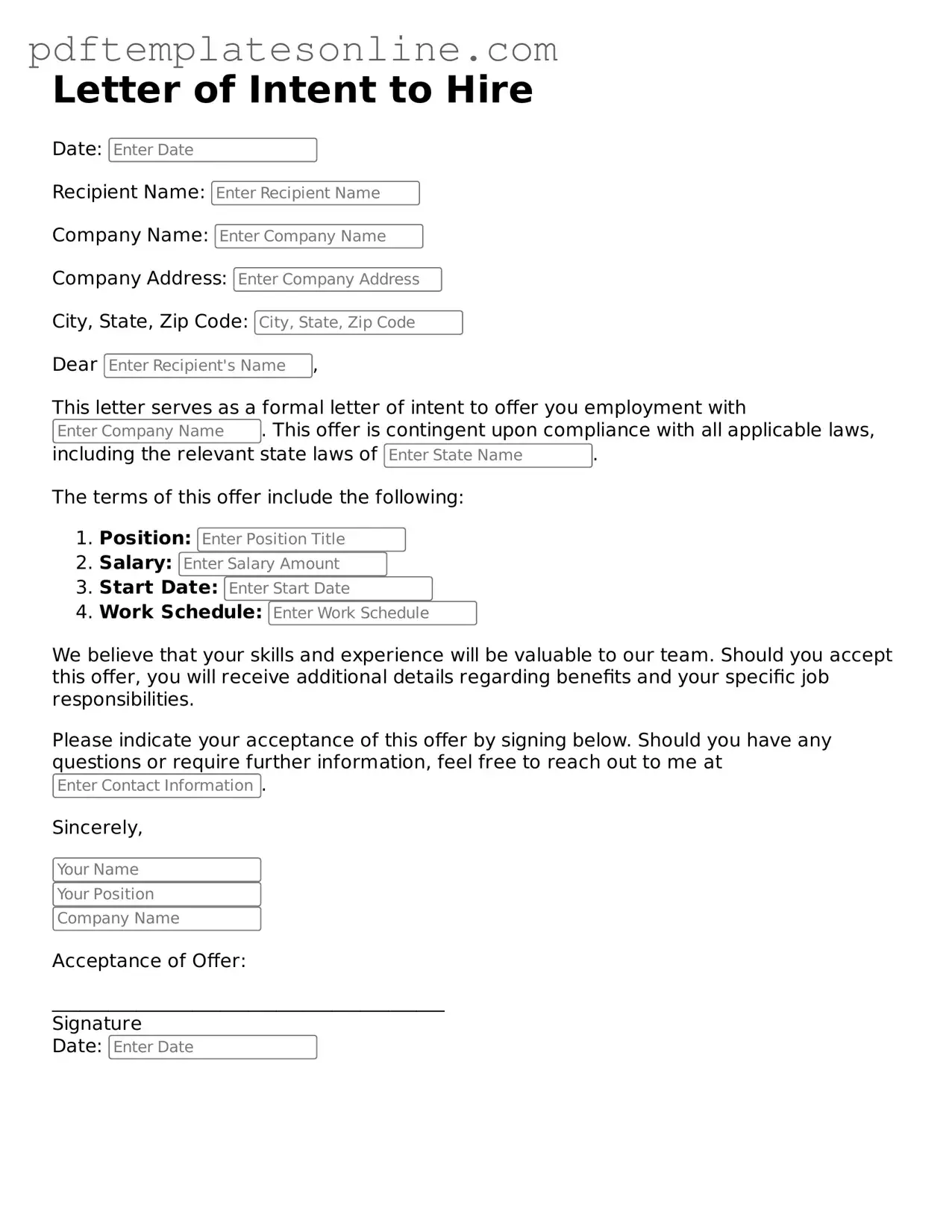Filling out a Letter of Intent to Hire form can seem straightforward, but many people make common mistakes that can lead to confusion or delays in the hiring process. One frequent error is leaving out essential personal information. This includes details like your full name, contact information, and position you are applying for. Without this information, the employer may struggle to identify your application.
Another mistake is providing incomplete or inaccurate information about previous employment. It’s crucial to list all relevant work experience, including dates of employment and job titles. Omitting this information can raise questions about your qualifications and work history.
Some applicants fail to tailor their Letter of Intent to the specific job they are applying for. A generic letter can come across as insincere. Instead, it’s important to highlight why you are a good fit for that particular position and how your skills align with the company’s needs.
Additionally, many people overlook the importance of proofreading their letters. Spelling and grammatical errors can create a negative impression. Taking the time to review your letter ensures that it is polished and professional.
Another common mistake is neglecting to include a closing statement or call to action. This part of the letter is your chance to express enthusiasm for the opportunity and indicate your desire for an interview. Failing to do so can leave the employer unsure about your interest.
Some applicants forget to sign their letter. A handwritten signature adds a personal touch and shows commitment. An unsigned letter may be viewed as incomplete or unprofessional.
Another error is using overly complex language or jargon. While it’s important to be professional, clarity should be the priority. Simple, straightforward language is often more effective in conveying your message.
In addition, many people fail to follow the submission guidelines outlined by the employer. This includes not adhering to formatting requirements or submitting the letter in the wrong file type. Following instructions demonstrates attention to detail and respect for the employer’s process.
Finally, some applicants do not take the time to research the company. Understanding the company’s culture, values, and recent news can help you craft a more compelling letter. This knowledge can set you apart from other candidates.
Avoiding these common mistakes can significantly enhance your chances of making a positive impression with your Letter of Intent to Hire. By taking the time to carefully fill out the form, you demonstrate professionalism and genuine interest in the position.
